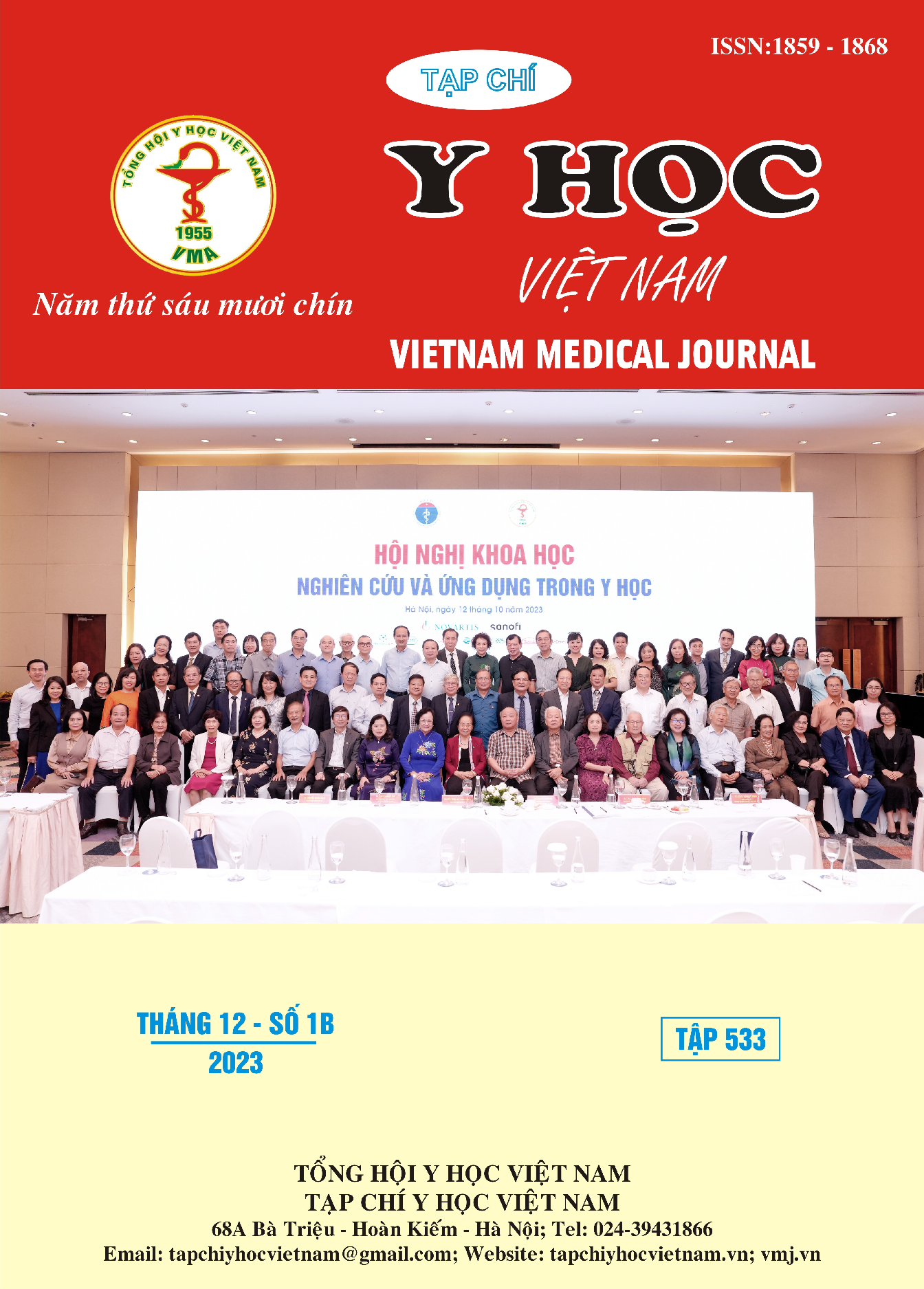SURVEY THE SITUATION OF ANTIBIOTIC USE IN THE TREATMENT OF HOSPITAL-ACQUIRED PNEUMONIA AT CHO RAY HOSPITAL IN THE PERIOD OF 2021 - 2022
Main Article Content
Abstract
Background: Hospital-acquired pneumonia (HAP) is a common disease with a very high prevalence worldwide and the treatment is often ineffective, which can lead to death. Antibiotics are one of the important interventions in the treatment and control of infections. Therefore, a survey on the actual use of antibiotics in the treatment of HAP is necessary. Objectives: Survey on the situation of antibiotic use in the treatment of hospital-acquired pneumonia at Cho Ray hospital in the period of 2021 - 2022. Materials and methods: Cross-sectional descriptive study was conducted through retrospective medical records at Cho Ray Hospital in the period of 2021 - 2022. Results: Patients with hospital-acquired pneumonia are mostly aged > 65 years old (accounting for 59.9%) with a male:female ratio of 1.58:1. Patients receiving a health insurance coverage of 80% account for 57.7%; 55.1% of patients had a treatment outcome of improvement, which is a high proportion; 61.0% of patients were treated in the internal medicine department. 98.3% of patients were prescribed a combination regimen of two or more drugs, with the fluoroquinolone being the most prescribed group with 19.6% and meropenem being the most prescribed drug with 14.9%. Conclusion: Combination regimens are the majority, and the fluoroquinolone group and the active ingredient meropenem are the most prescribed in the treatment of hospital-acquired pneumonia.
Article Details
References
2. Roquilly A, Torres A, Villadangos JA, Netea MG, Dickson R, Becher B, et al. Pathophysiological role of respiratory dysbiosis in hospital-acquired pneumonia. The Lancet Respiratory Medicine. 2019;7(8):710-20.
3. Karakuzu Z, Iscimen R, Akalin H, Girgin NK, Kahveci F, Sinirtas M. Prognostic risk factors in ventilator-associated pneumonia. Medical Science Monitor: International Medical Journal of Experimental and Clinical Research. 2018;24:1321.
4. Linh NTT, Tuyền NTL, Huy NT. Thực trạng sử dụng thuốc kháng sinh trong điều trị viêm phổi cộng đồng ở trẻ em dưới 5 tuổi tại bệnh viện nhi đồng cần thơ năm 2019-2020. Tạp chí Y Dược học Cần Thơ. 2021(37):41-7.
5. Nghiêm NT, Suôl PT. Mô tả đặc điểm vi khuẩn và tình hình đề kháng kháng sinh của vi khuẩn trên bệnh nhân viêm phổi bệnh viện tại Bệnh viện Đa khoa thành phố Cần Thơ. Tạp chí Y Dược học Cần Thơ. 2022(51):140-7.
6. Tân LB. Nghiên cứu đặc điểm lâm sàng, X quang phổi và vi khuẩn gây bệnh của viêm phổi bệnh viện ở người lớn điều trị tại bệnh viện Phổi Trung ương 2018. 2018.
7. Phạm Hồng Thái. Phân tích việc sử dụng kháng sinh trong điều trị VPBV tại bệnh viện đa khoa tỉnh Yên Bái. 2023.
8. Nguyễn Thị Nguyệt. Phân tích tình hình sử dụng kháng sinh trên bệnh nhân viêm phổi bệnh viện và viêm phổi thở máy tại bệnh viện đa khoa tỉnh Tuyên Quang. 2022.
9. Nguyễn Việt Hùng. Phân tích thực trạng tiêu thụ kháng sinh và việc sử dụng kháng sinh trong điều trị viêm phổi bệnh viện tại Bệnh viện đa khoa Điện Biên. 2019.


